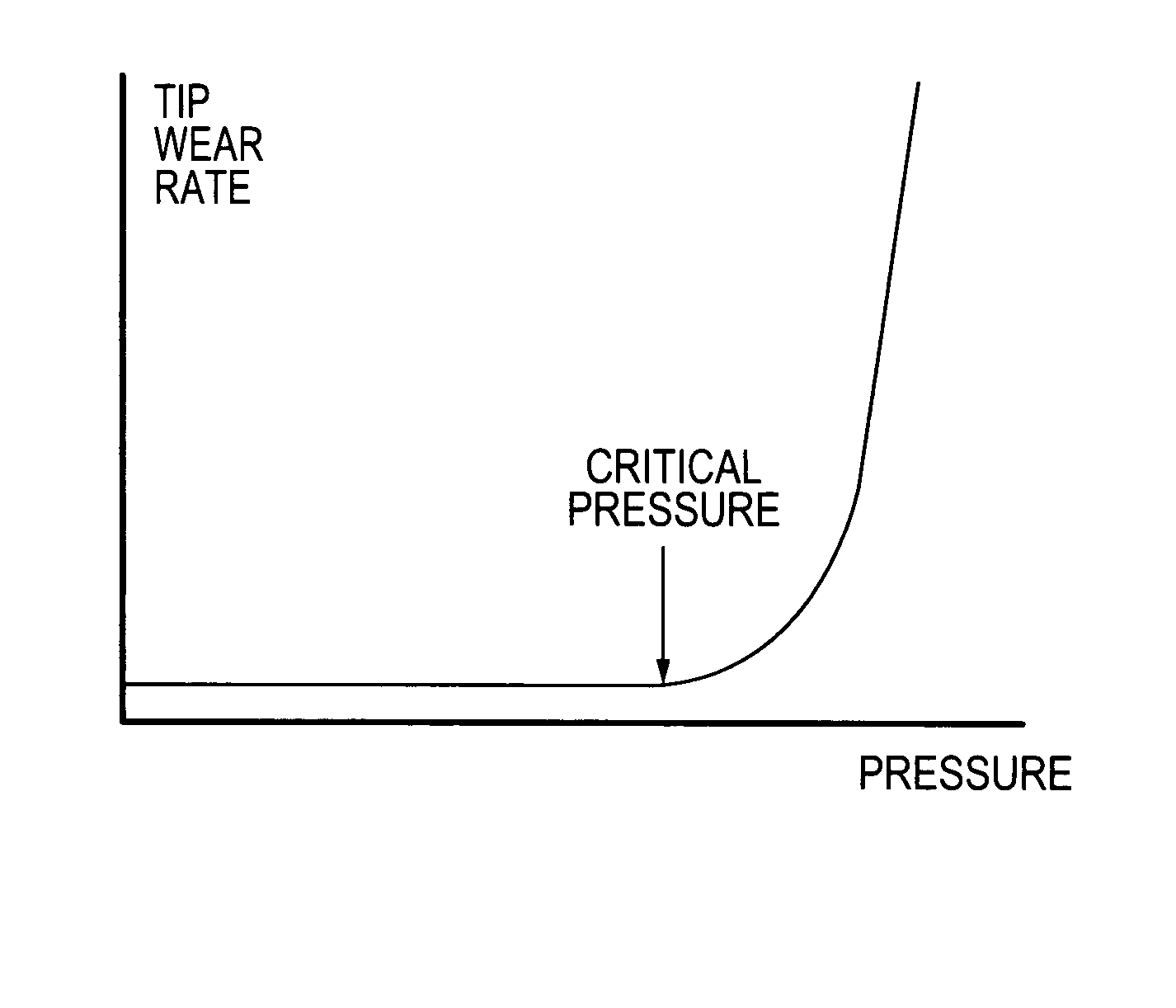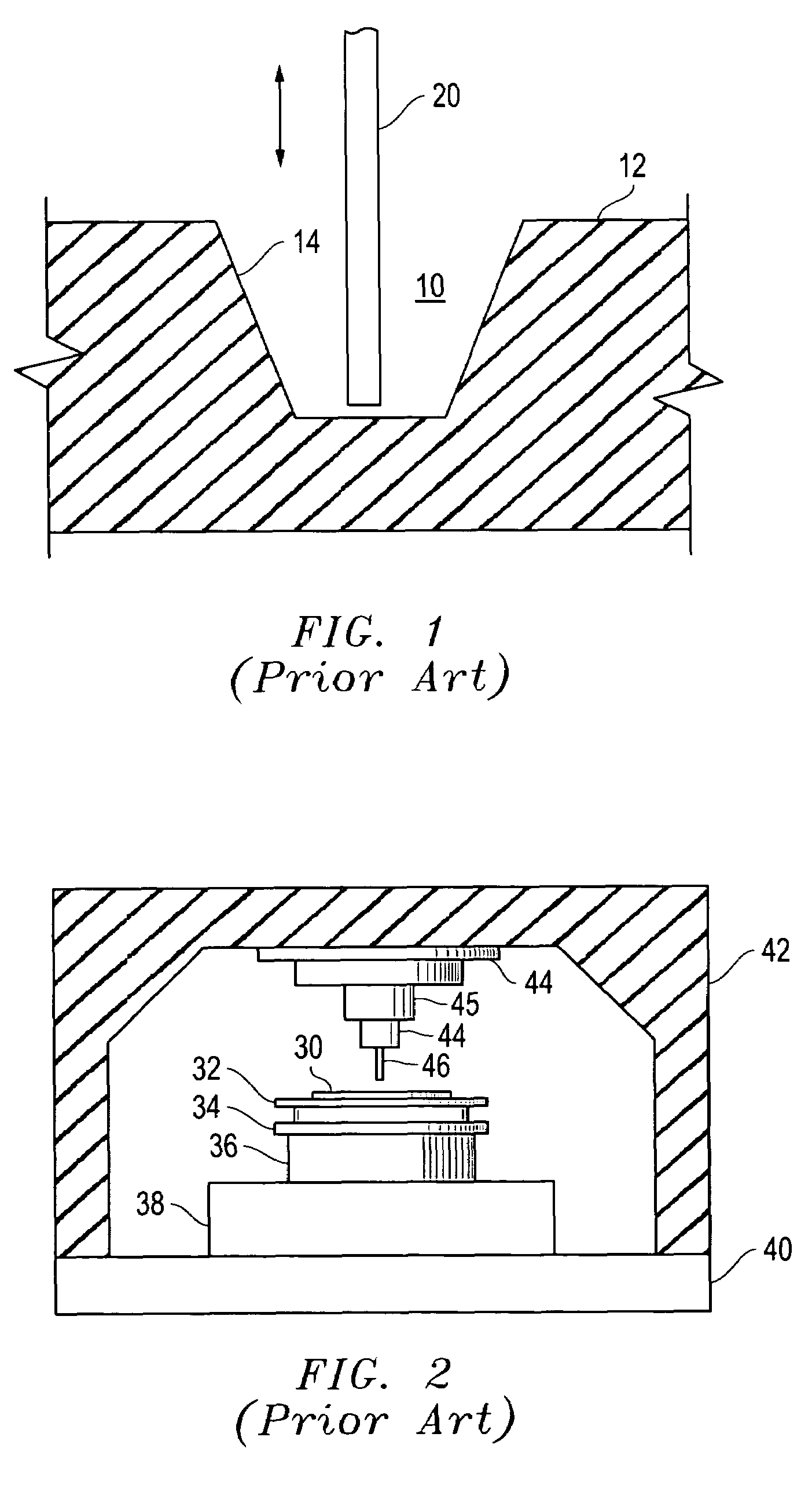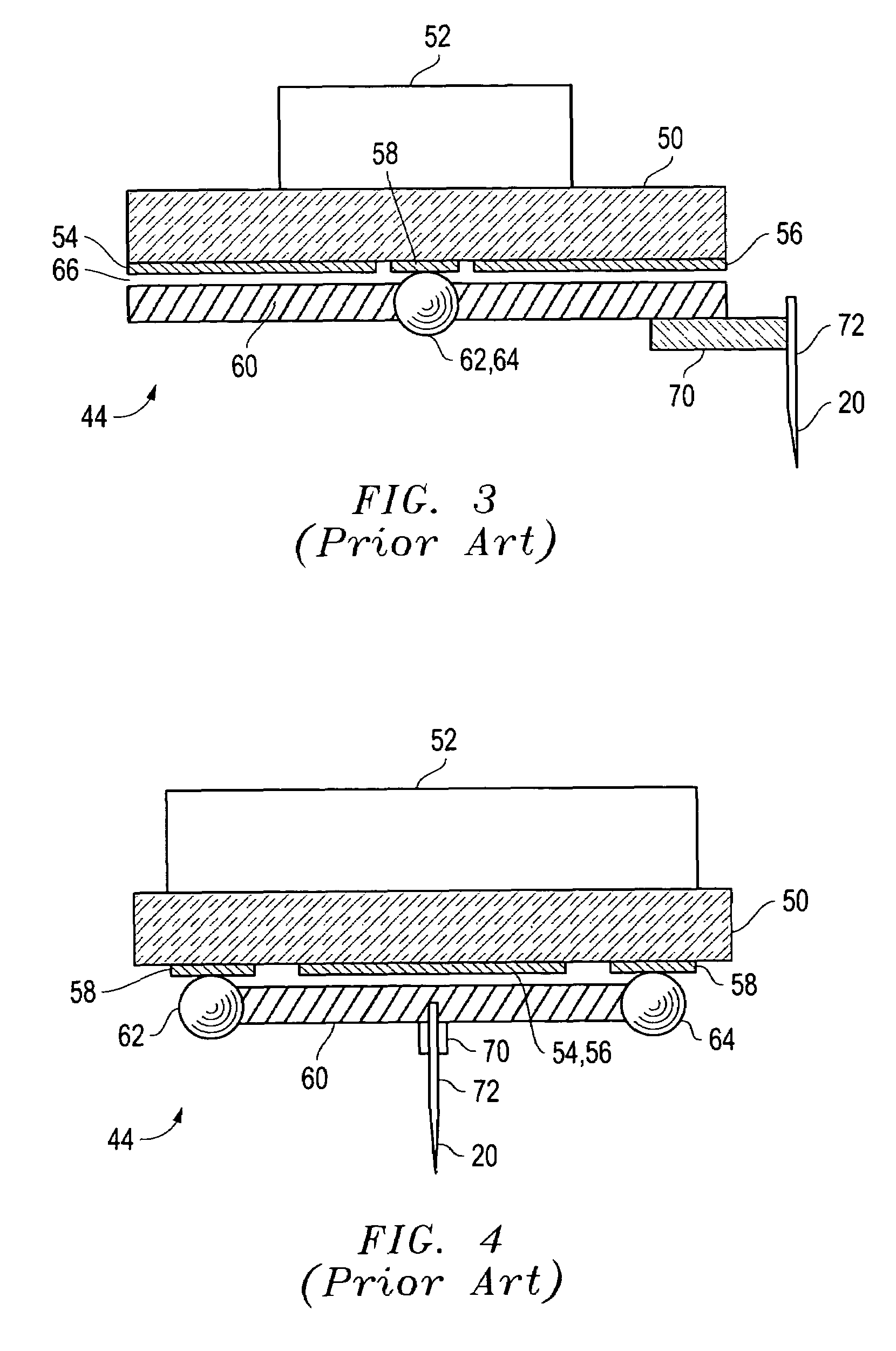Stylus system for modifying small structures
a technology of modifying system and small structure, which is applied in the direction of mechanical measurement arrangement, mechanical roughness/irregularity measurement, instruments, etc., can solve the problems of inability to replace a defective mask, the difficulty of producing photo-masks for the lithographic process without defects, and the common appearance of defects on the photo-mask layer. , to achieve the effect of rapid and accurate modification of small structures
- Summary
- Abstract
- Description
- Claims
- Application Information
AI Technical Summary
Benefits of technology
Problems solved by technology
Method used
Image
Examples
Embodiment Construction
[0034]A preferred embodiment of the present invention provides a method and apparatus for repair of defects in photo masks and semiconductors. In a preferred embodiment, defects within a region of observation are identified. Then, for each defect a “manifold,” that is, a boundary constraint on the region of space through which the probe tip will move to remove material, is defined for repair of the defect. A probe is selected for the repair, which desirably can be the same probe used for observation. The defect is repaired under control of an algorithm and, optionally, the repair region is reexamined and iteration of the repair procedure occurs. These steps are fully automate-able, or the user may be requested to initiate each step sequentially. And the user can select between one programmable sequence of steps and another.
[0035]Thus, in a preliminary step a mask or semiconductor to be repaired is loaded into the instrument of the present invention. The mask / semiconductor (hereafter...
PUM
| Property | Measurement | Unit |
|---|---|---|
| frequency | aaaaa | aaaaa |
| frequency | aaaaa | aaaaa |
| response frequency | aaaaa | aaaaa |
Abstract
Description
Claims
Application Information
 Login to View More
Login to View More - R&D
- Intellectual Property
- Life Sciences
- Materials
- Tech Scout
- Unparalleled Data Quality
- Higher Quality Content
- 60% Fewer Hallucinations
Browse by: Latest US Patents, China's latest patents, Technical Efficacy Thesaurus, Application Domain, Technology Topic, Popular Technical Reports.
© 2025 PatSnap. All rights reserved.Legal|Privacy policy|Modern Slavery Act Transparency Statement|Sitemap|About US| Contact US: help@patsnap.com



